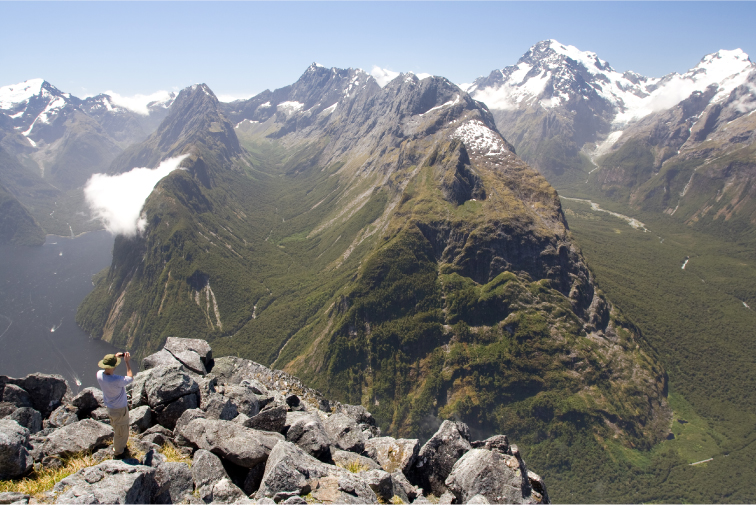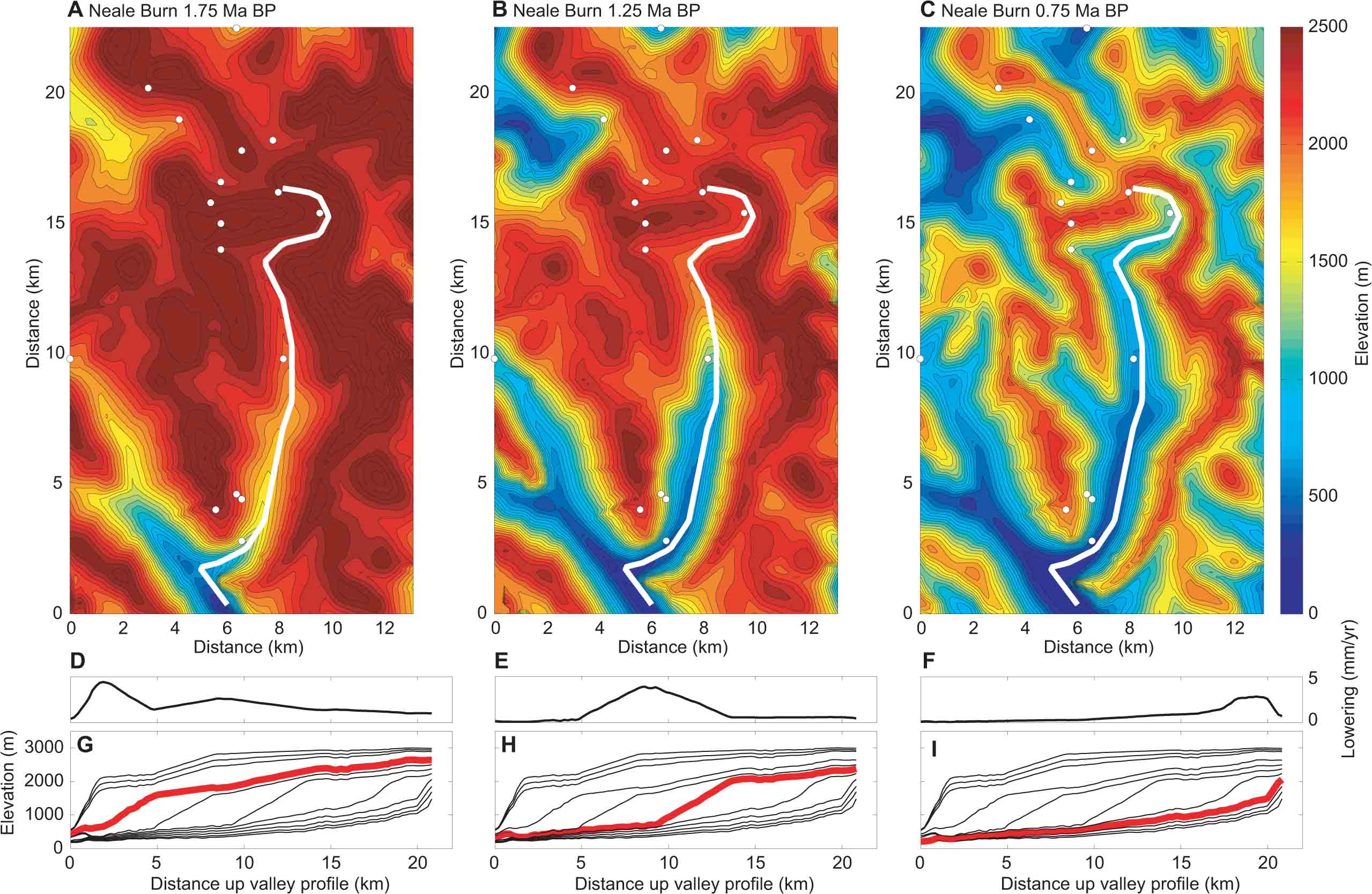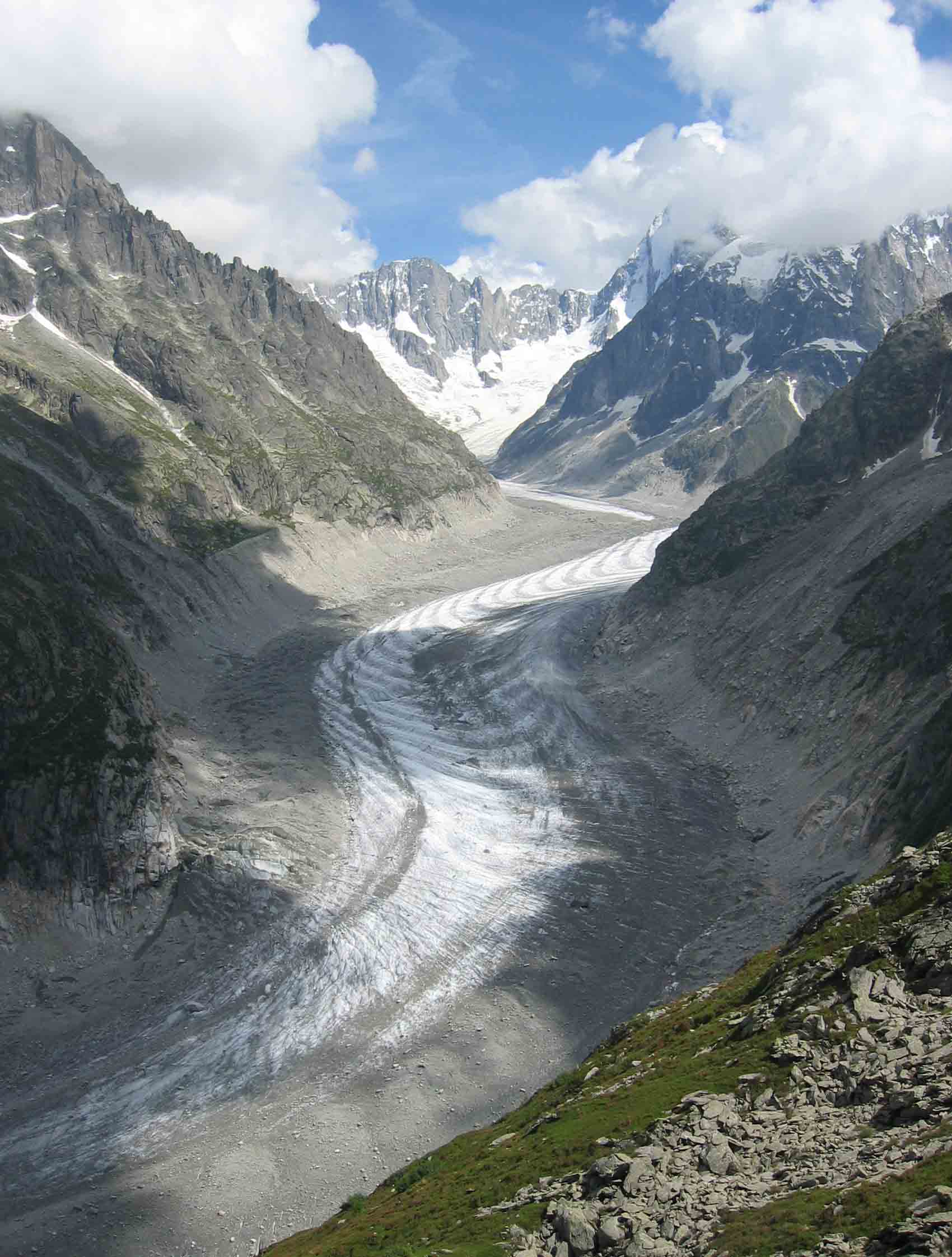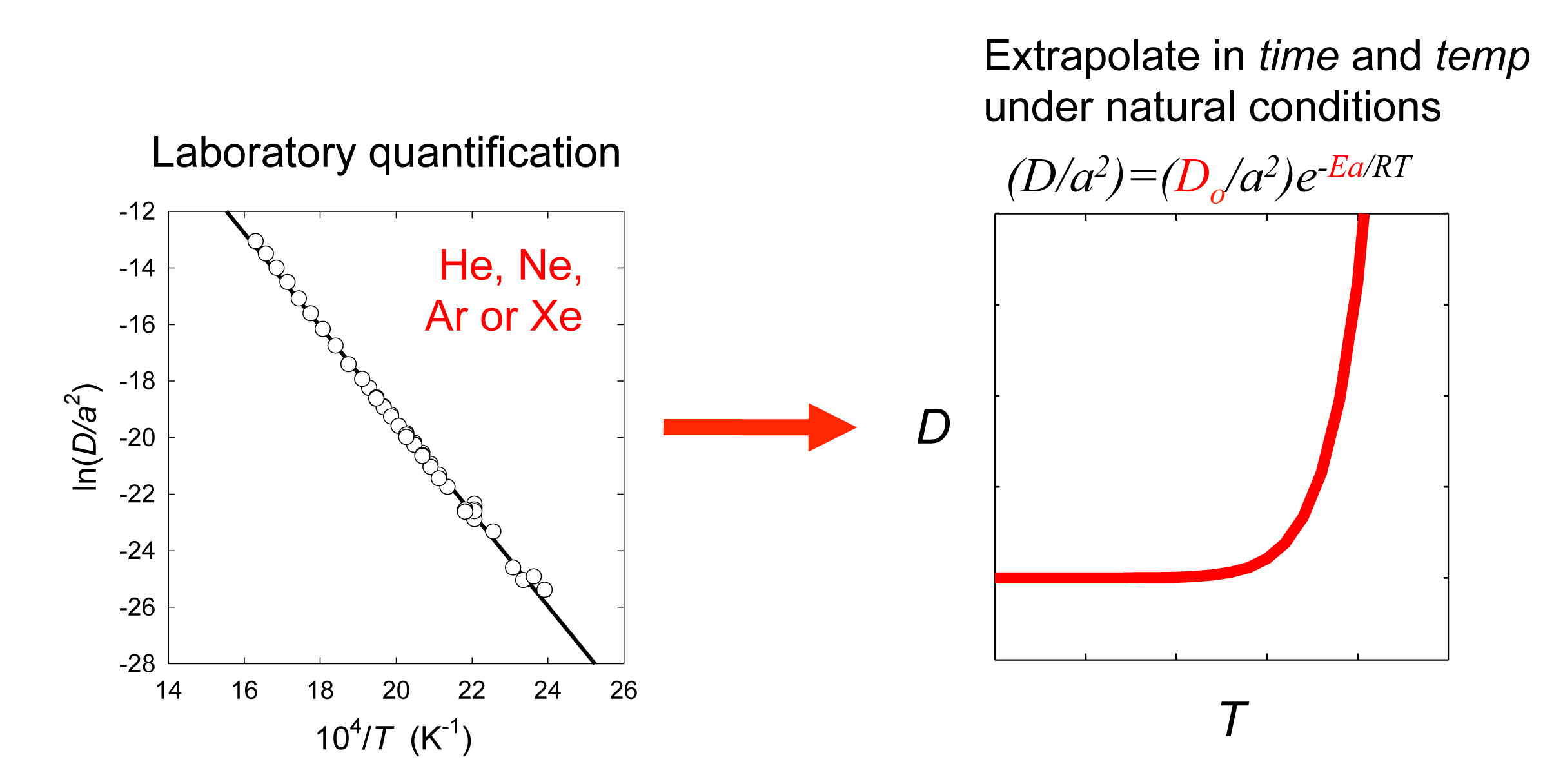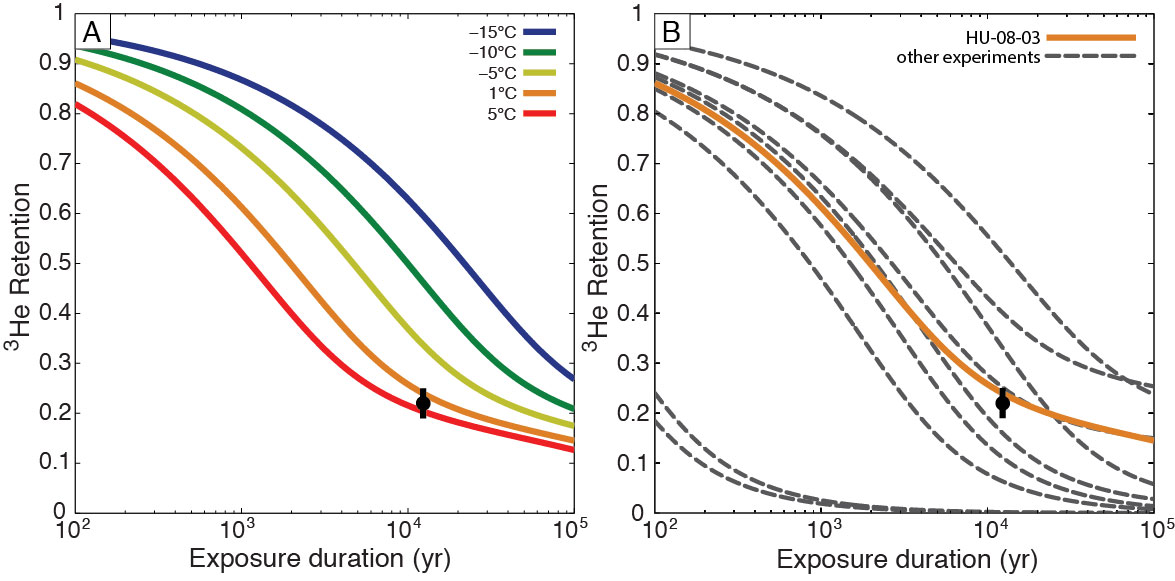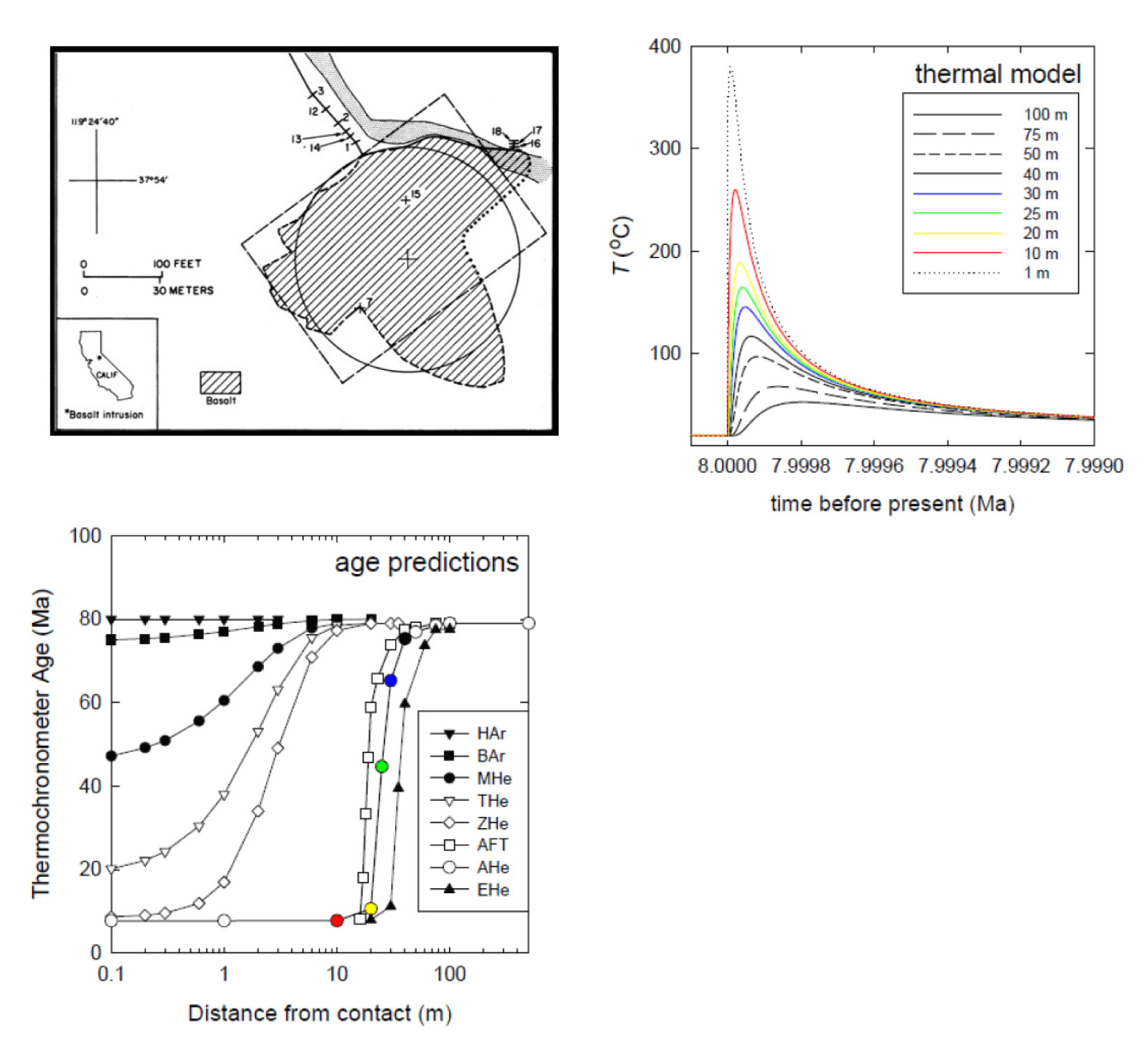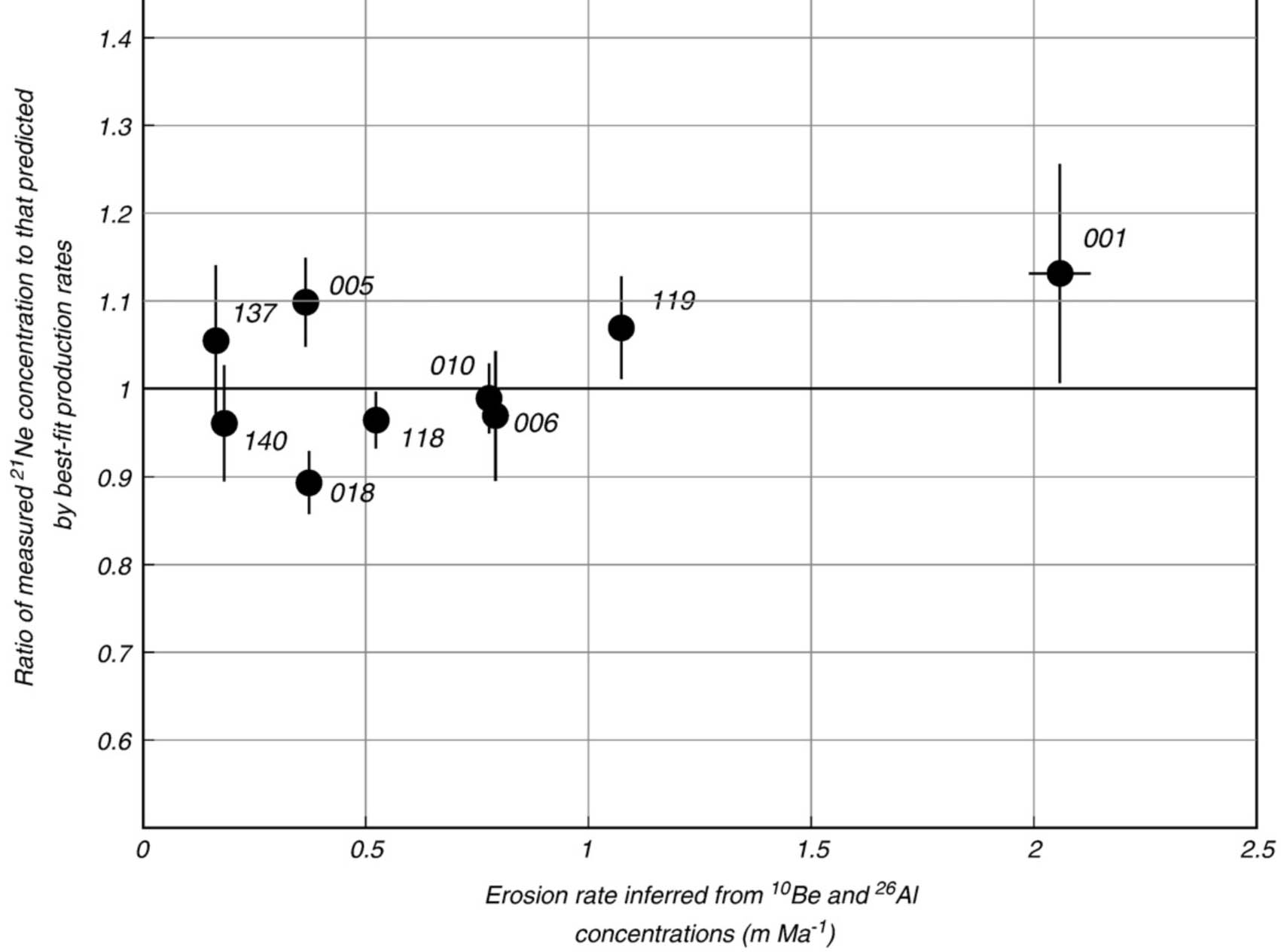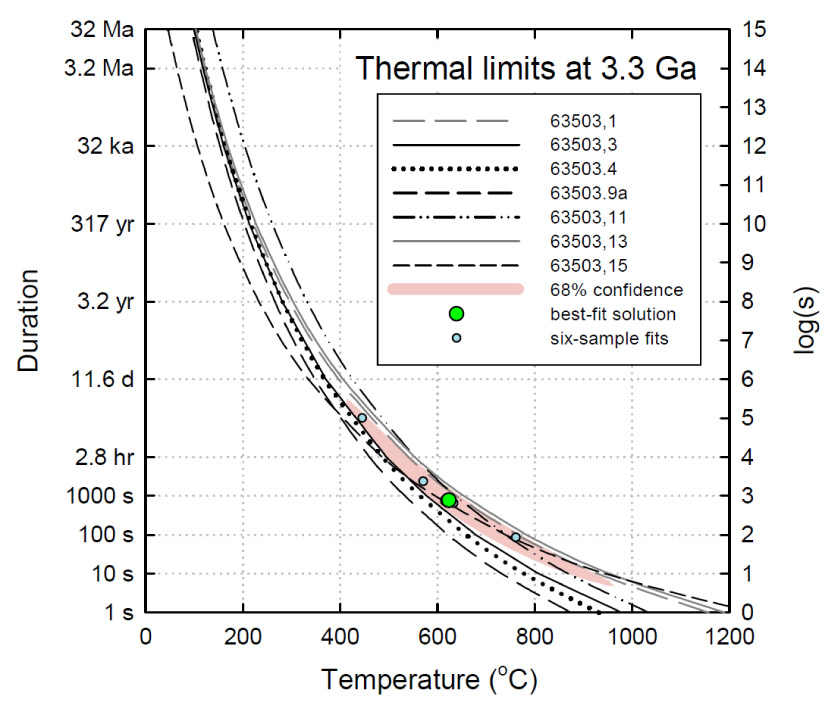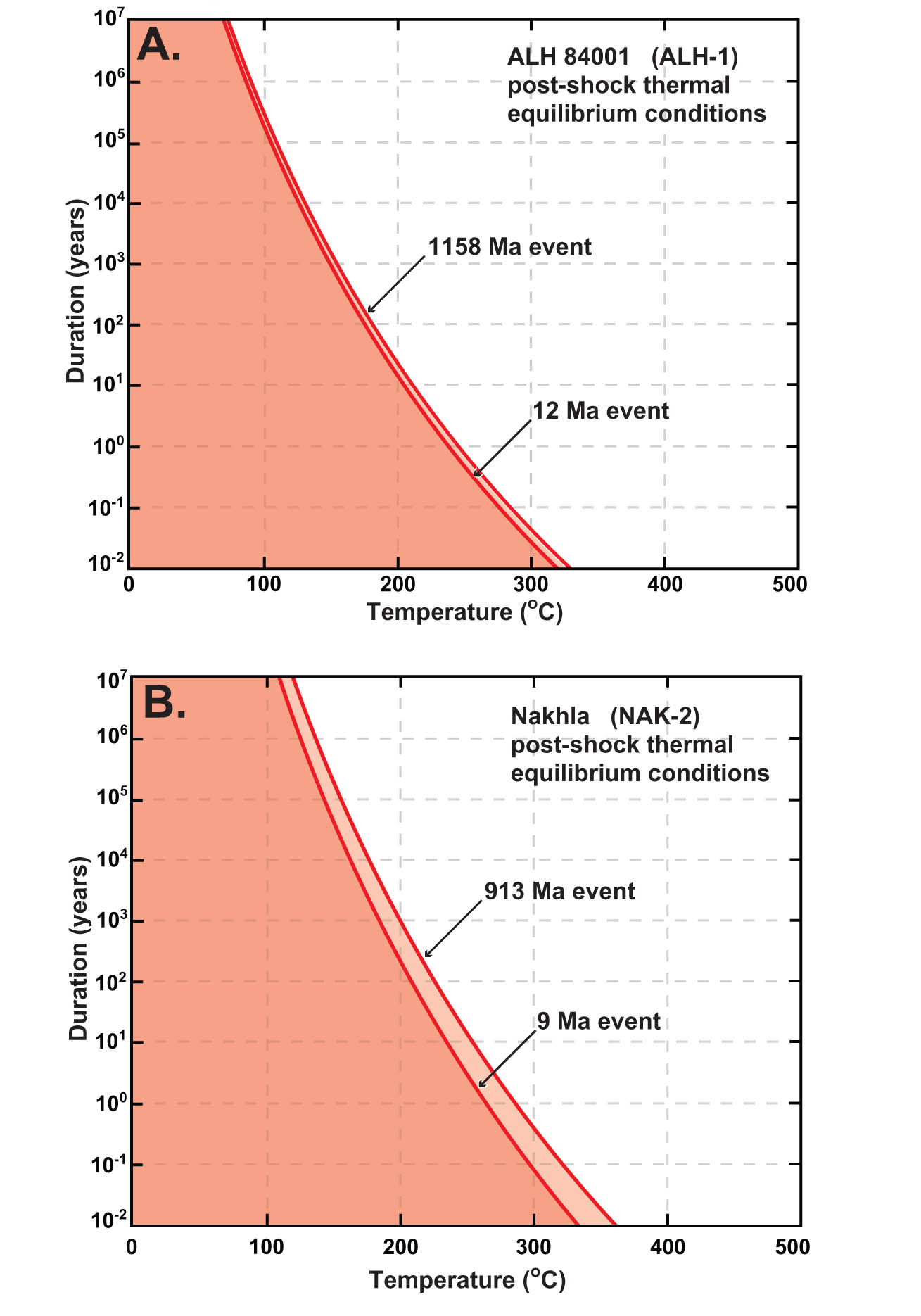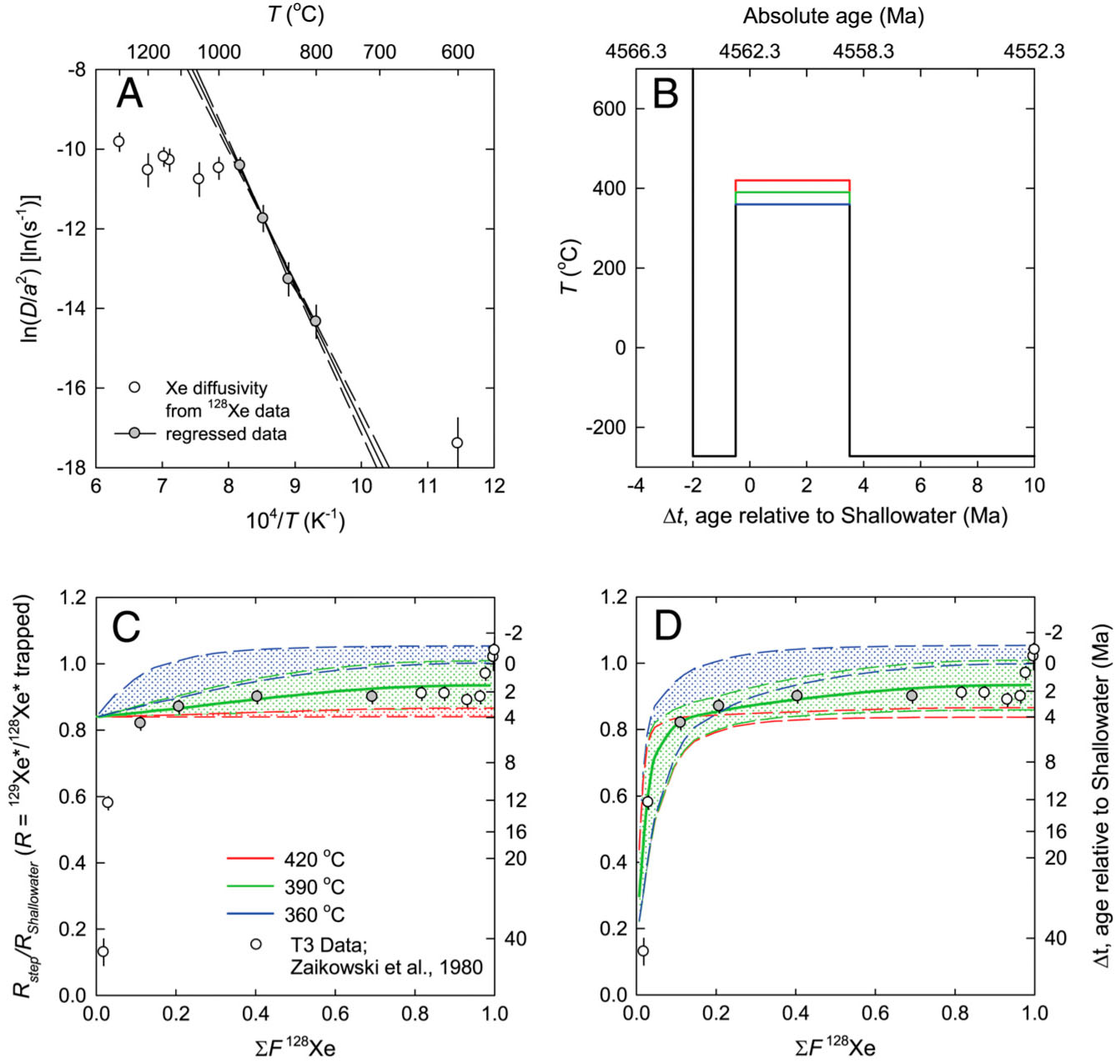Glacial Valley Incision
As part of an ongoing project, we are studying the development of mountain topography in both glaciated and non-glaciated landscapes across the globe. This work involves applications of apatite (U-Th)/He and 4He/3He thermochronometry over relatively localized spatial scales. By determining how specific points in a landscape cooled through time, we are able to infer how the km-scale topography developed through both space and time as erosion modified the form of the surface. Some fundamental questions are: How did processes that were active during the Pleistocene modify mountain topography in such a dramatic way? How did this topographic modification vary through space and time, on local scales and globally as a function of latitude?
Project locations
We are currently studying the development of mountain topography at various locations around the world. Some of this work has been focused on fluvial incision, while other sites are known to have experienced alpine glaciers during the Pleistocene.
Lhasa Block, Tibet
With a large group of colleagues at other institutions, we are studying the Lhasa Block in southern Tibet to examine crustal evolution of a convergent margin across the transition from convergence to collision. We are examining how the early history of a convergent margin can influence later development of the collisional margin, integrating data from studies in geochemistry, geochronology, paleoelevation studies, seismology, tectonics, and thermo-mechanical modeling. This multidisciplinary five-year project involves a number of investigators from institutions in the U.S., China, and Europe. The PIs include Don Depaolo and David Shuster at Berkeley, Peter Zeitler and Anne Melzer at Lehigh, An Yin and Mark Harrison at UCLA, David Rowley at Chicago,, and Frederic Herman at ETH Zurich, and Mo Xuanxue, Zhidan Zhao, and Di-cheng Zhu at China University of Geosciences. This project is funded by the NSF EAR Continental Dynamics Program. Two papers from this project on the development of topography in the region can be seen here: Tremblay et al., (2015) and Schmidt et al., (2015).
Timescales of chemical weathering
Geochronological methods applied to minerals that precipitate in the weathering environment constrain the timing of specific chemical reactions, and hence physical and chemical conditions, leading to their precipitation. In principle, the timing of secondary oxide precipitation records points in time when local environmental conditions were such that liquid water was abundant.
For several years, we have been developing and applying the (U-Th)/He system in goethite. Since goethite often occurs as aggregates of very small crystals, this approach is typically not straightforward. One advantaged to goethite is that stable isotopes of oxygen and hydrogen can also be measured to determine the temperature of goethite precipitation. With Crayton Yapp, we have begun to apply both methods to goethites from the Arctic that record Arctic conditions in the Miocene/Pliocene. More recently, we have been observing cosmogenic 3He in both goethite and hematite from deep weathering profiles in Brazil.
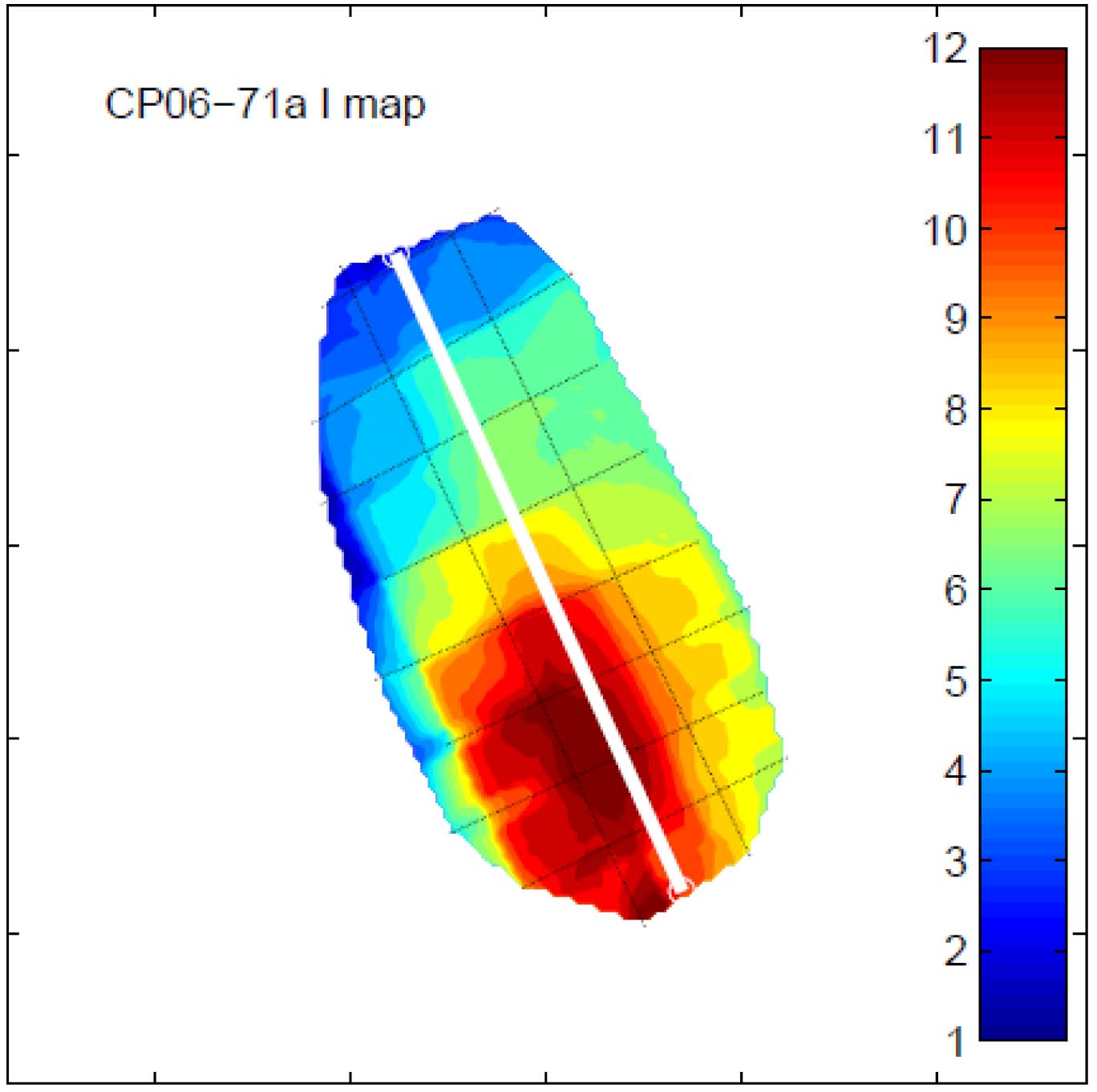 Geochemistry Basic Research:
Geochemistry Basic Research:
Noble Gas diffusion
Central to all of our work is a foundation of basic research focused on the physics and chemistry of each geochemical system that we use. Over the last several years, we have been quantifying the diffusion kinetics of He, Ne and Ar is different minerals. All of this work involves irradiating minerals with either energetic protons or neutrons to induce nuclear reactions leading to noble gas nuclides that we can easily measure via controlled degassing experiments with a mass spectrometer. For example, we have conducted experiments to study the influence of radiation damage accumulation on the retentivity of He in apatite; as part of Bill Cassata’s thesis, we’ve studied Ar diffusion in both plagioclase and pyroxene over a range of chemical composition; and to establish whether cosmogenic 21Ne is quantitatively retained at earth surface temperatures, with Loraine Gourbet as a visiting student, we’ve quantified the kinetics of 21Ne and 22Ne diffusion in feldspar, pyroxene and olivine. Each of these gas-mineral pairs has specific temperature sensitivity that can be used to address a range of geological questions.This work is funded primarily by the NSF EAR Petrology and Geochemistry program.
Cosmogenic Noble Gas Paleothermometry
Diffusion of cosmogenic noble gases such as 3He and 21Ne at Earth surface temperatures has been observed empirically in field studies and is predicted by stepwise heating experiments for common phases like quartz and feldspars. The theory and mathematics of simultaneous production and diffusion applied to radiogenic noble gases in minerals—the basis of noble gas thermochronology—can in principle also be applied to cosmogenic noble gases, offering a potentially powerful tool for reconstructing past surface temperatures. We are exploring the possibility of using cosmogenic noble gases as a paleothermometer through laboratory diffusion experiments, modeling, and calibrated geologic tests. We have conducted a suite of diffusion experiments on proton-irradiated quartz fragments and used the experimental results to model the time-temperature sensitivity of 3He–quartz thermometry. We are beginning to conduct diffusion experiments on feldspars and applying cosmogenic noble gas paleothermometry to geologic studies in places like Antarctica and the Atacama Desert. This work is funded by the NSF EAR Petrology and Geochemistry and Geormophology and Landuse Dynamics programs.
Little Devil's Postpile
A fundamental assumption in much of the work described above is that experimentally-determined kinetics of noble gas diffusion can be extrapolated over geologic timescales and to temperatures outside experimental conditions; this assumption is difficult to test.
In this project, we aim to test such assumptions by studying the Little Devil's Postpile in Yosemite National Park, where Calk and Naser conducted their seminal study showing how a younger basalt intrusion had systematically and predictably reset fission-track ages of apatite and sphene in the surrounding Sierra granite. This work is collaboration between Peter Zeitler and graduate student Jen Schmidt at Lehigh University, Peter Reiners at Arizona, Rich Ketcham at Texas, Leif Karlstrom at Stanford, and David Shuster at Berkeley. This field site offers the opportunity to inter-calibrate and assess 10-15 thermochronometric systems in different minerals based on (U-Th)/He, K/Ar, and fission-track accumulation. This project is funded by the NSF EAR Petrology and Geochemistry program.
U and Th zonation
Many applications of the (U-Th)/He system have assumed a spatially uniform distribution of U and Th within apatite crystals. Whereas strongly heterogeneous distribution of U and Th had been observed in zircon, we only recently began to routinely measure U and Th in apatite by laser ablation ICP-MS analysis of polished grain mounts. This work has revealed that while some apatite crystals have quite uniform distributions, others are significantly non-uniform. Since the spatial distribution of parent nuclides controls the 4He production function, this has implications for the (U-Th)/He system using both the bulk 4He abundance and 4He/3He thermochronometry. You can read more about this analytical approach here (pdf), and implications for 4He/3He thermochronometry here (pdf).
In principle, combining 4He/3He stepped-heating analysis with LA-ICPMS U and Th analysis of multiple crystals from the same rock should provide additional constraint on the thermal history, especially if they have different parent nuclide distributions. With Ryan McKeon, we are studying several samples from the Appalachian Mountains using this approach. Stay tuned to hear about what we’ve found…
Production rates of cosmogenic nuclides
The production rates of cosmogenic 21Ne and 3He are not very well known in many minerals that could be useful in earth science. To quantify a production rate requires independent knowledge of surface exposure, which is often very difficult to obtain. An alternative approach is to determine the ratio of 21Ne or 3He to 10Be in the same or co-existing quartz. Then, the rate of 21Ne or 3He production can be estimated from the rate of 10Be production in quartz. We’ve taken this approach to quantify the rate of cosmogenic 21Ne production in quartz and also the rate of 3He production in Fe-oxides found in deeply weathered rock in Brazil.
 Lunar Projects:
Lunar Projects:
Lunar magnetic field
Over the last several years, our collaboration between MIT and Berkeley has been combining paleomagnetic observations with detailed 40Ar/39Ar thermochronometry of the same Apollo samples to determine when the moon had an active magnetic field. Using samples that are ideal recorders of paleomagnetism, we showed initially that the moon had an active magnetic field of at least 1 microtesla, and therefore an advecting metallic core, until at least ~4.2 billion years ago. In a more recent study, we’ve now shown that a magnetic field of at least ~12 microteslas persisted until ~3.7 billion years ago (for comparison, Earth’s surface field intensity is currently ~50 mT). Stay tuned to find out when the lunar dynamo ceased…
These findings have important implications for mechanisms capable of generating a late lunar dynamo, including stirring of the core by precession or by the impact of large bolides. This work has been funded by the NASA LASER program.
40Ar/39Ar thermochronometry of lunar surface rocks
Closely related to our efforts to understand when the moon had an active magnetic field, is detailed work to constrain permissible thermal conditions of lunar samples. Because rocks at the surface of the moon have been subjected to impact events, we are often concerned about relatively brief reheating associated with these impacts. In some cases we have been able to precisely quantify the conditions during these events by combining 40Ar/39Ar thermochronometry of co-existing samples. You can read about this basic approach here (pdf).
It’s amazing to think about and quantify the conditions of an even that lasted only ~ 1 hour, but which occurred 3.3 billion years ago! Throughout this research, we have continued to learn about the mineral systems in these rocks and to develop methods for analyzing these samples. The NASA LASER program and the Ann and Gordon Getty Foundation have funded this work.
 Mars Projects:
Mars Projects:
40Ar/39Ar thermochronometry of Martian meteorites
Beginning in 2001, Ben Weiss and David Shuster initiated a collaboration to combine 40Ar/39Ar thermo-chronological models with paleomagnetic observations ultimately to interpret the timing of magnetization and to constrain permissible thermal conditions of the Martian meteorites, which constrains the mean temperatures near the surface of Mars over long timescales.
In our initial work, we relied upon published 40Ar/39Ar datasets that were not necessarily optimal for this purpose. With the objective of quantifying the kinetics of Ar diffusion in these samples, we have more recently conducted detailed 40Ar/39Ar thermochronometry of ALH84001 and Nahkla at BGC using modern analytical techniques and multi-phase models. You can read about what we’ve found in a paper led by Bill Cassata here (pdf).
 Meteorite Research:
Meteorite Research:
Magnetization of early solar system condensates
In a continuing collaboration between MIT and Berkeley, we have been studying the magnetization of early solar system condensates to test for evidence of planetesimal core dynamos. In a study of the CV carbonaceous chondrite Allende, we combined paleomagnetic observations with thermochronological modeling of the I-Xe system to show that that CV chondrites are derived from the outer, unmelted layer of a partially differentiated body with a convecting metallic core. You can read about what we found in a paper led by Laurent Carporzen (pdf).
Iondine-129 decays to 129Xe with a relatively short half life, so the I-Xe system records conditions over earliest time at the beginning of the solar system. Provided that we can quanfity the kinetics of Xe diffusion in the Iodine host phase, we can use this system to constrain thermal conditions before all of the 129I decayed away. The calculations shown at right indicate that the apparent spatial distribution of radiogenic 129Xe within the Allende T3 CAI is well explained by a ~4 Ma long metamorphic event at a mean temperature of 390 ± 15°C occurring between ~4564 Ma and ~4560 Ma. The ability to infer temperatures during the first few million years after the solar system formed is remarkable!

